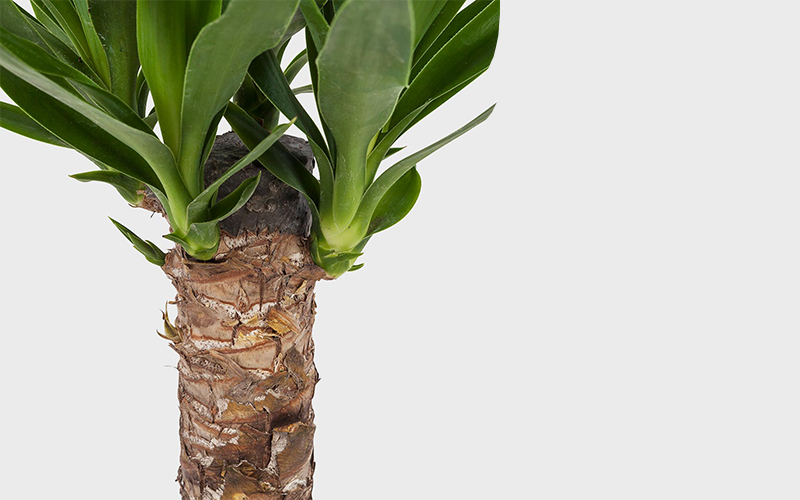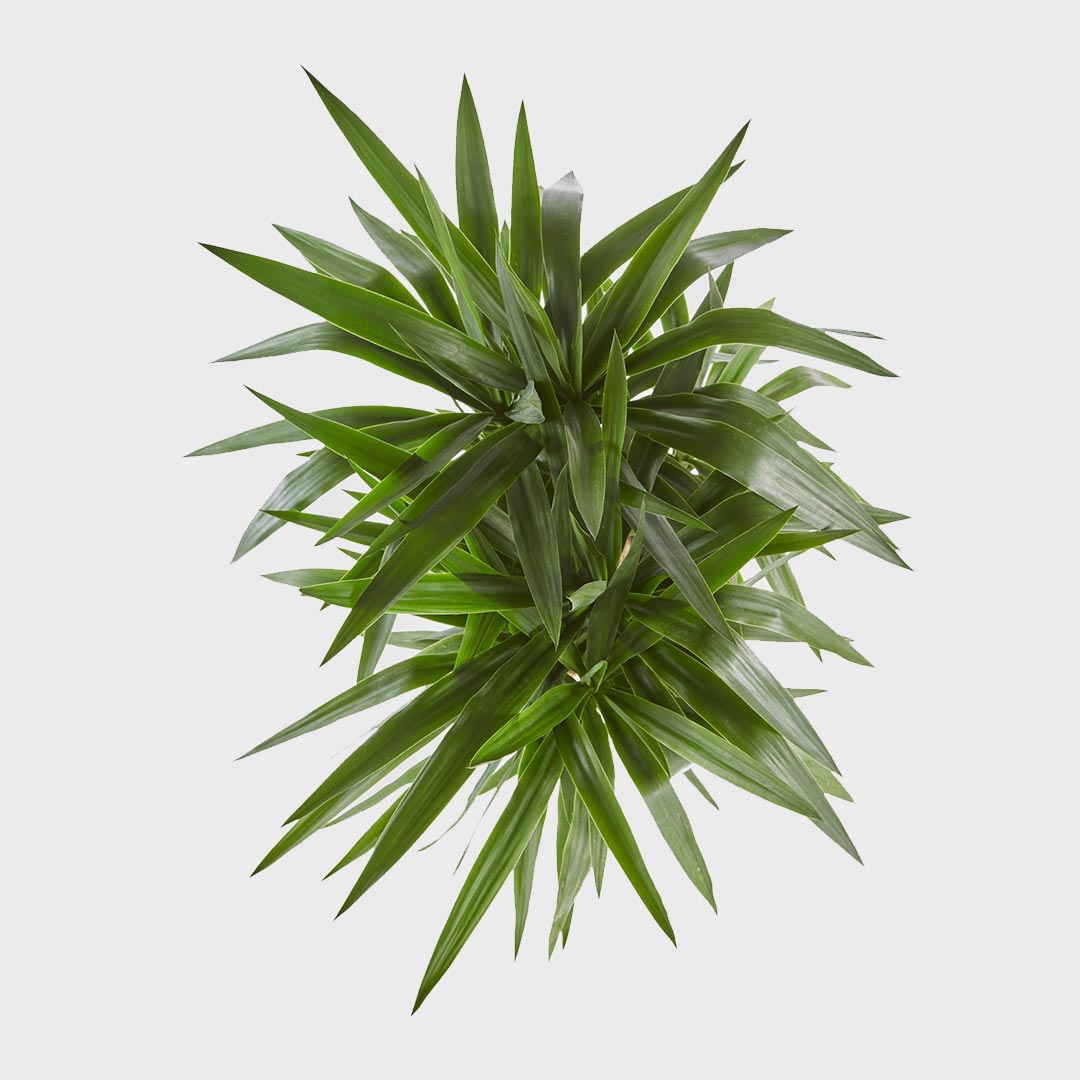
Deliver to
Europe
 English
English

The Yucca comes from dry Central America. Yucca plants are alluring, flexible, and easy to nurture. They feature sword-shaped leaves that add a dramatic architectural effect to one’s home. In addition to its mesmerizing beauty, the Yucca also offers a plethora of benefits.
Medium light
Water once a month
Toxic
Not air-purifying
Like most indoor plants, the Yucca requires bright but indirect sunlight. They can't tolerate too much direct sunlight or intense shade, only for shorter periods. If exposed to direct sunlight for a long while, the leaves can scorch and burn. As a result, the plant can only tolerate 3 to 5 hours of medium light.
There’s a common misconception that Yucca plants doesn’t need much water to grow. Even though a Yucca can hoard moisture to save water for drier climates or drought-like conditions, it certainly can't live with just a little water. However, it doesn’t like being drowned in too much water either.
It is best to water a succulent every month in the growing season, from spring to summer. In the fall and winter it is best to only water the plant once every 3 months.
The Yucca doesn't use a lot of energy. However, the plant likes extra nutrients in the growing season. You can provide these nutrients by plant nutrition. We recommend giving plant nutrition once every month. From spring until autumn. After autumn and in winter it is better not to give extra nutrients. In the winter, plant nutrition can actually be harmful for the Yucca!
Repotting a Yucca isn't necessary every year. We therefore recommend repotting a Yucca only when really necessary, or at least once every 3 years. Make sure the new flowerpot is at least 20% larger than the previous one.
The most ideal temperature for a Yucca plant is typically between 15 to 27 degrees Celsius. It prefers a warm and moderate climate, and many species can tolerate both hot and cold temperatures.
Pruning can help you remove dead or damaged leaves, promotes a more compact and tidy appearance, and encourages new growth. It can also be done to control the size of the plant and prevent it from becoming too large. Clean and sharp pruning tools should be used to make clean cuts and avoid damaging the plant.
The Yucca does not suffer from any diseases. Although pests can occur on all types of plants. It is therefore good to check the plant regularly. In case of vermin, you can always use a pesticide.


The most common reason why yuccas are in poor condition is too much water. When a plant gets too much water, root rot can occur. In most cases, adjusting the watering will suffice. If this is not helping, see our tips on root rot.
If you notice that the leaves of the Yucca are drooping, this is usually caused by too much water. It is even possible that the stem is rotting from the inside, which means that the stem can no longer support the leaves. The best thing to do in such cases is to reduce the amount of water given, and possibly even prune the trunk.
You can prune the trunk and leaves of the Yucca. The best time to prune the Yucca is in autumn or late winter. From spring onwards you can expect new leaf growth.
Yuccas can grow to a height of 200 to 250 cm indoors. In nature, a Yucca can even grow up to 9 meters high. You can influence the height and width of the Yucca by pruning the plant in the late winter.